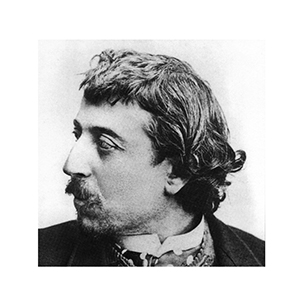Paul Gauguin - When Will You Marry (1892)
Size - 40 in x 30 in
Medium - Oil on Canvas
Paul Gauguin
is a French post-impressionist, who travelled to Tahiti in 1890's with the
intention of reviving his work by adapting into a society which he believed to
be free of western influence.
 The creation is very colorful, a
mix of vibrant yellows, red, green and blue. The painting shows two Tahitian
women seated on the ground. They look in different directions, and neither
appear to be looking at the painter. The figure of the woman on the foreground
is vibrant, she is resting one hand while leaning forward, seemingly about to
rise and leave. Her clothes are free flowing, which embody a spirit of
liberation which the artist sees in the culture. Her eyes glance toward to
woman behind her, she has a slight pout in her mouth which suggests a rift
between the two. Her garments are distinctly western and she sits upright, her
pose very prim. She too glances at her companion from the corner of her eyes
with an expression of disapproval.
The creation is very colorful, a
mix of vibrant yellows, red, green and blue. The painting shows two Tahitian
women seated on the ground. They look in different directions, and neither
appear to be looking at the painter. The figure of the woman on the foreground
is vibrant, she is resting one hand while leaning forward, seemingly about to
rise and leave. Her clothes are free flowing, which embody a spirit of
liberation which the artist sees in the culture. Her eyes glance toward to
woman behind her, she has a slight pout in her mouth which suggests a rift
between the two. Her garments are distinctly western and she sits upright, her
pose very prim. She too glances at her companion from the corner of her eyes
with an expression of disapproval.
The appearances of the two,
portray an inviting posture signaling a certain degree of openness which
clashes with the stern and forbidding nature of the other. The surrounding
landscape in this painting is very diverse, there are plenty of trees, water
and mountains. The first woman's attire flawlessly harmonizes with the
landscape, the latter woman's garment causes her to stand out, portraying the
conflict in the scenery. There are two figures in the distance, it is unclear
who they are, if they are men or if they are waiting for these women.
The painting clearly portrays the
contrast between two cultures, the free spirited lady in the flowing garments,
she has broken free of the mentality of a woman as a homemaker that commonly
marked western society in the past. The other in the background brings the
traditional western values of the 19th century. The white daisy on
the woman may symbolize that she is in the prime of her youth, ready for
marriage and the other woman has her hand raised in question. It is unclear if
the women represent the clash between the cultures as explained, or an
illustration of two different attitudes.
It is said that Paul Gauguin
visited Tahiti in search of a paradise in which he could create primitive art,
by escaping from the European society, technology and cultural traditions. But
it did not meet his expectation of rural and primitive life, as the country was
colonized as early as the 18th century. This painting was created in
1892, where he settled with a young girl and adapted to the local life. We see
through his paintings that he did find inspiration in Tahiti, the creativity
and expressive nature are fine examples.
This painting was also sold for a staggering $300m recently and was
purchased by a Swiss art collector.